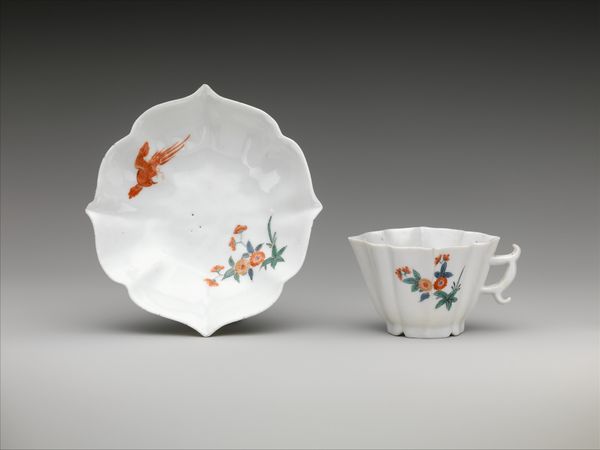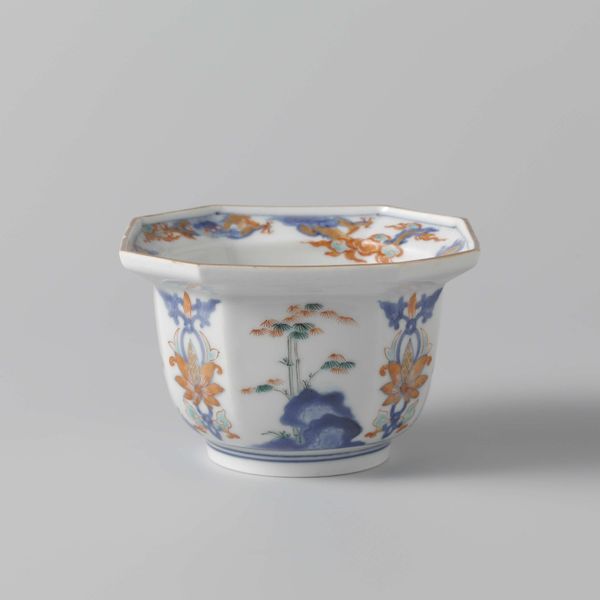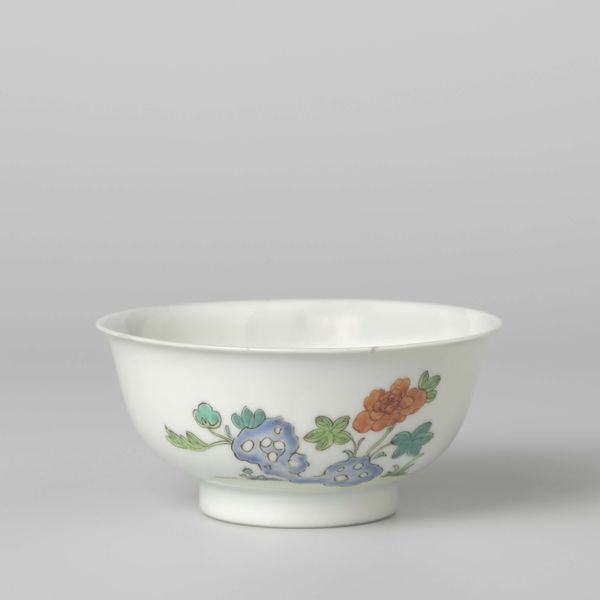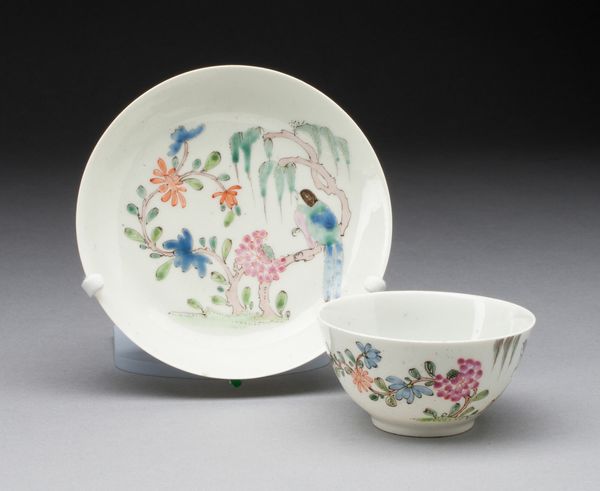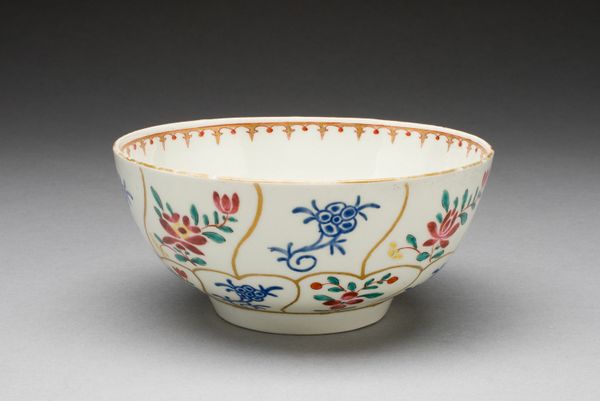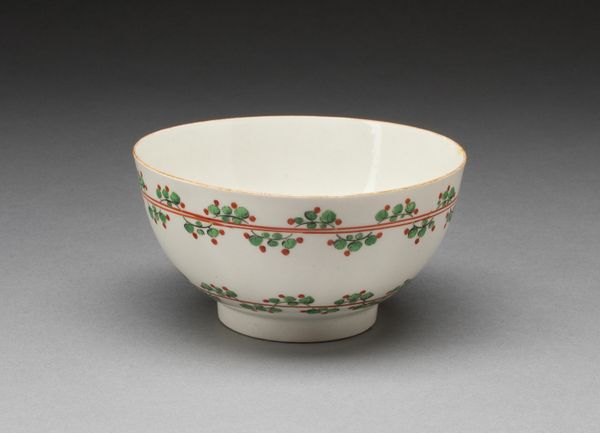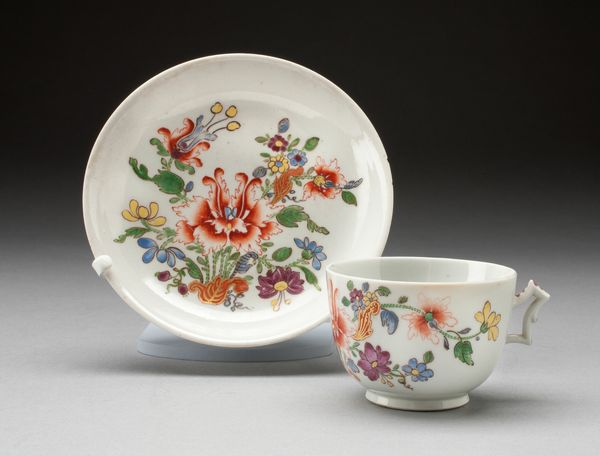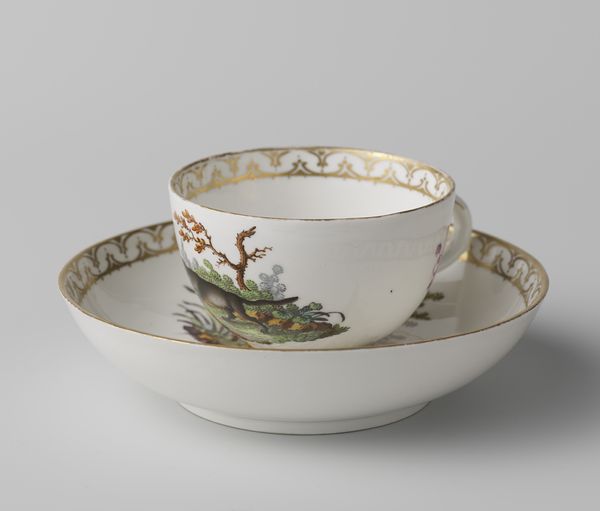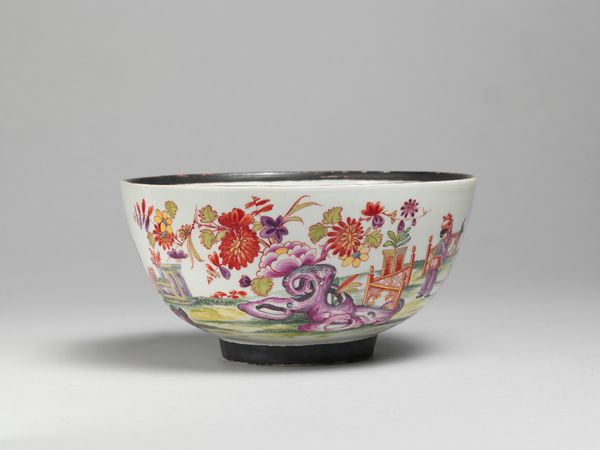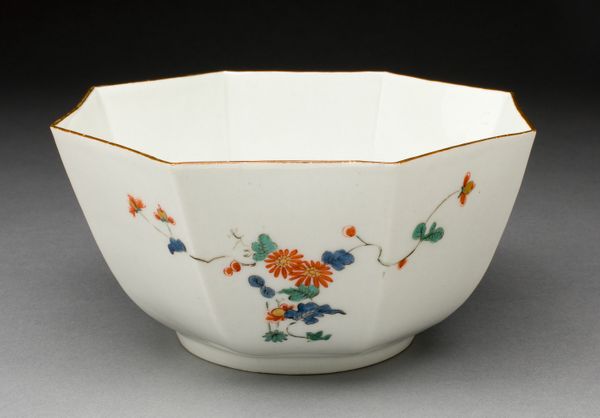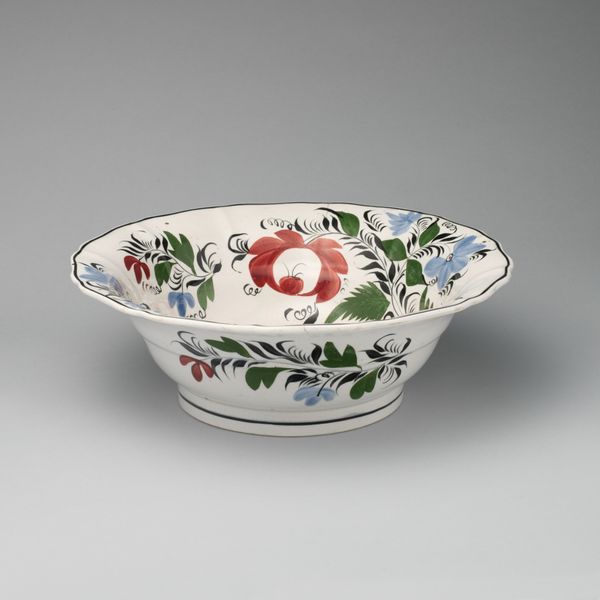
ceramic, porcelain, sculpture
#
ceramic
#
porcelain
#
sculpture
#
decorative-art
#
rococo
Dimensions: Beaker (.3): H. 2 9/16 in. (6.5 cm.); Diam. 2 15/16 in. (7.5 cm.); Saucer (.4): Diam. 5 5/16 in. (13.5 cm.)
Copyright: Public Domain
Editor: This is a porcelain cup and saucer from Chantilly, made around 1730-1740, and it strikes me with its delicate rococo style. Those colorful butterfly decorations give it such a playful, almost ephemeral quality. How would you interpret the meaning of this piece, given its material and form? Curator: I see here a fascinating intersection of class, material, and production. Porcelain itself, by the 18th century, had become a symbol of wealth and sophisticated taste in Europe. The meticulous craft required, from the sourcing of the raw materials to the skilled labor involved in its firing and painting, reveals the economic system that supported its creation. How do the butterflies complicate this understanding? Editor: I suppose the butterflies add another layer of meaning; their bright colors might contrast the laborious production, representing the delights of leisurely consumption? Curator: Precisely. The butterflies, symbols of beauty and transformation, are carefully painted using specific pigments. Consider the accessibility of those pigments, the artistry in their application. It wasn't just about function; this cup and saucer were meant to be seen, admired, perhaps even displayed as a signifier of social standing. Where might something like this be used? Editor: Maybe in a salon? Where tea was more than just a beverage, but a ritual that facilitated social interactions and even displayed wealth. Curator: Indeed. And who benefited from its production? Were the workers who crafted these items treated with the same care implied by the artwork's delicacy? Looking at this cup, we aren’t only looking at an object of beauty, but at the whole network of social relations embedded in its making. Editor: This makes me reconsider decorative arts. I initially saw its elegance but now appreciate how something seemingly delicate reveals complex economic and social relationships. Curator: Exactly, and understanding these relationships provides insight into 18th century culture and consumption.
Comments
No comments
Be the first to comment and join the conversation on the ultimate creative platform.
